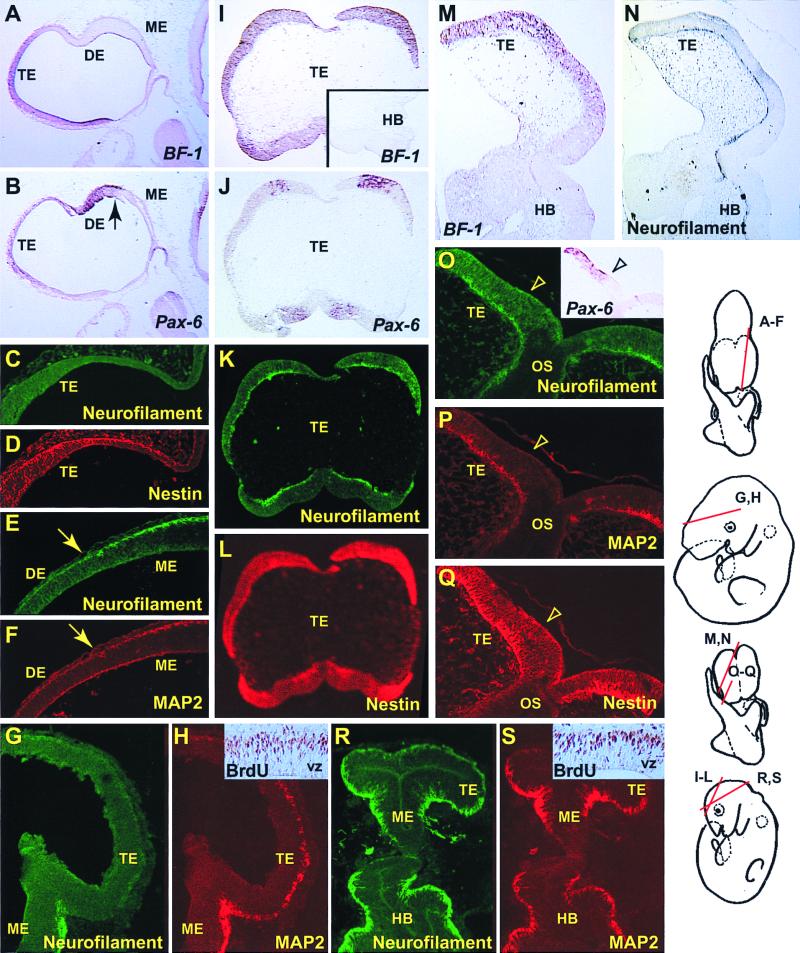Figure 4.
Precocious production of neurons in the m-numb mutant forebrain at E10.5. (A–H) Heterozygous control (m-numbΔ5,6/+). (I–S) Homozygous mutant (m-numbΔ5,6/Δ5,6). Because of the defects in cranial neural tube closure, molecular markers (BF-1 and Pax6) are used to identify the mutant telencephalon. I–L, M and N, and O–Q are adjacent sections, respectively. C and D, E and F, G and H, K and L, O and P, and R and S are double-staining of the same section, respectively. Notice that sections from the wild-type forebrain (telencephalon and diencephalon) have very few cells that show immunostaining for Neurofilament (C, E, and G) or MAP2 (F and H), both of which are neuronal markers, whereas those from the mutant forebrain have Neurofilament (K, N, O, and R) and MAP2 (P and S)-positive cells throughout the forebrain. Both in the wild-type (D) and the mutant (L and Q) forebrain, most of the cells in the neuroepithelium are positive for Nestin, a neural progenitor cell marker. Insets in H (wild type) and S (mutant) show BrdUrd incorporation in the forebrain after a 2-h pulse. The arrow in B, E, and F marks the junction between mesencephalon and diencephalon, whereas the arrowhead in O, P, and Q marks the border of Pax-6 expression domain (O, Inset). TE, telencephalon; DE, diencephalon; ME, mesencephalon; HB, hindbrain; OS, optic stalk; VZ, ventricular zone.

